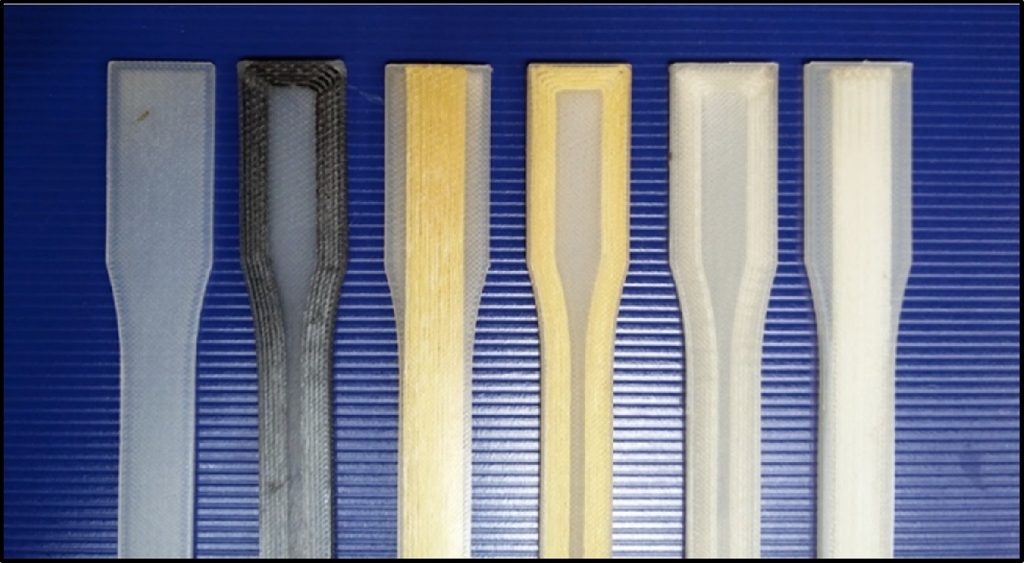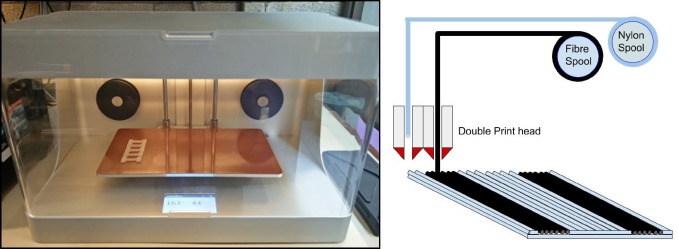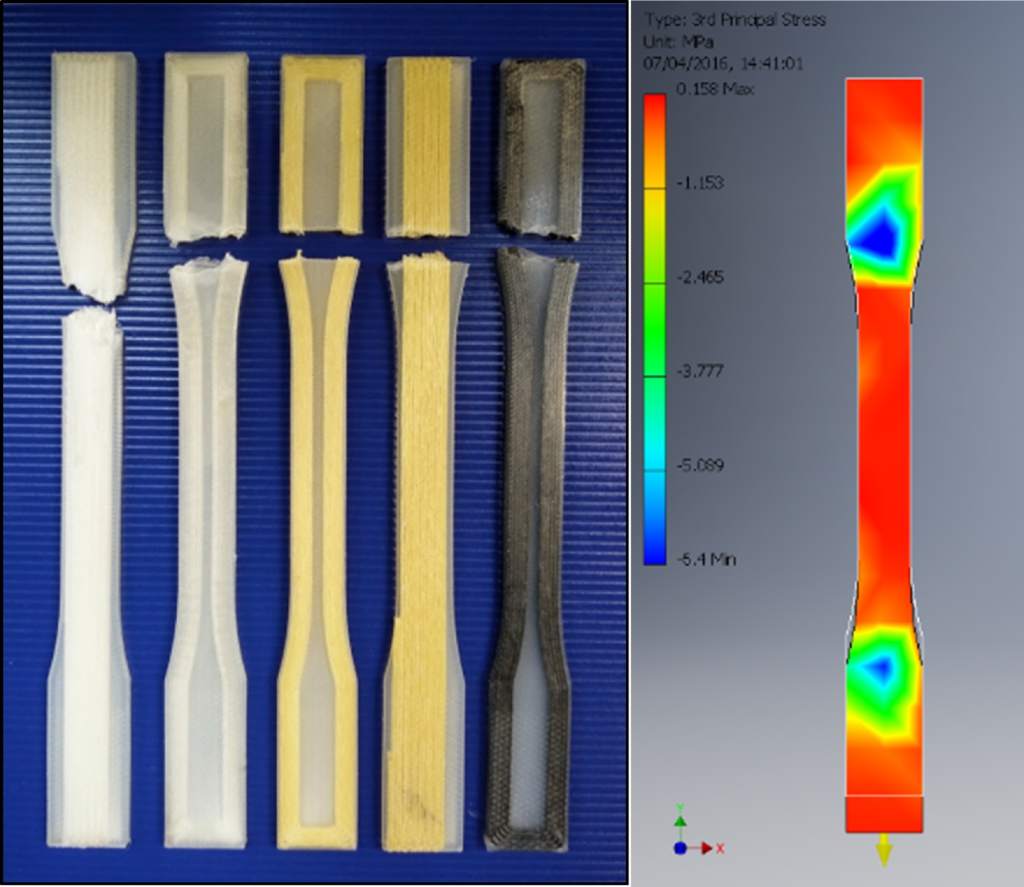Looking into ways to improve the strength of nylon 3D printer filament, researchers at University College Dublin have conducted a comparative study on the addition of fiber reinforcements. In the research glass, synthetic polymer Kevlar, and carbon fibers are tested for their ability to improve the performance of a 3D printed object, proving tensile abilities comparative to metal.
Alternating and patterning
The three experimental fibers are added to a pure nylon filament through a two nozzle Mark One 3D printer, from award winning 3D printer company Markforged. In this process, nylon and fiber materials are 3D printed in alternate layers to create research standard dog-bone bars.

Glass A, Glass B. Photo via Additive Manufacturing vol.16

Patterning of the fiber layers is one of the key elements to creating tensile strength in the bars. Though two fiber patterns are initially proposed in the research, Concentric pattern ‘A’ and Isotropic pattern ‘B’, only pattern could be fully tested due to its stiffness when attempted using carbon.

Aluminum’s superior
After 3D printing in different concentrations of carbon, Kevlar and glass fibers, the dog-bone bars are stressed to breaking point, characterizing their tensile (stretchable) and mechanical (bendable) properties.

By comparison to a dog-bone sample of pure nylon filament, tensile and flexural strengths improved 6.3 fold and 5-fold respectively. The strongest material composite proved to be nylon reinforced with carbon fibers, followed by glass, and then Kevlar which is typically used to strengthen tyres. All composites also demonstrated tensile strengths superior to that of aluminum.
A composite material world
In the interest of improving the properties of FDM/FFF filaments, graphene oxides have been variously added ABS, PLA, and TPU materials, as in a study from CWRU. Silk is also subject to expansive composite research for its medical applications, and the Louisiana Board of Regents has awarded $150k to a project focused on such materials.
Such a body of research has developed due to the widespread availability of FDM/FFF 3D printers, and the relative low cost of the materials the machines use. As discussed by Dr. Achala de Mel in relation to her 3D printed stent research, improved understanding of extrudable materials is poised to open up the applications of 3D printing technologies, especially within high-value medical and automotive industries.
Fabrication of continuous carbon, glass and Kevlar fibre reinforced polymer composites using additive manufacturing is co-authored by Andrew N. Dickson, James N. Barry, Kevin A. McDonnell, and Denis P. Dowling from the School of Mechanical and Materials engineering at University College Dublin, Ireland.
Featured image: Nylon brake levers with varying faber reinforcement 3D printed using Markforged technology. Photo via 3DHubs



